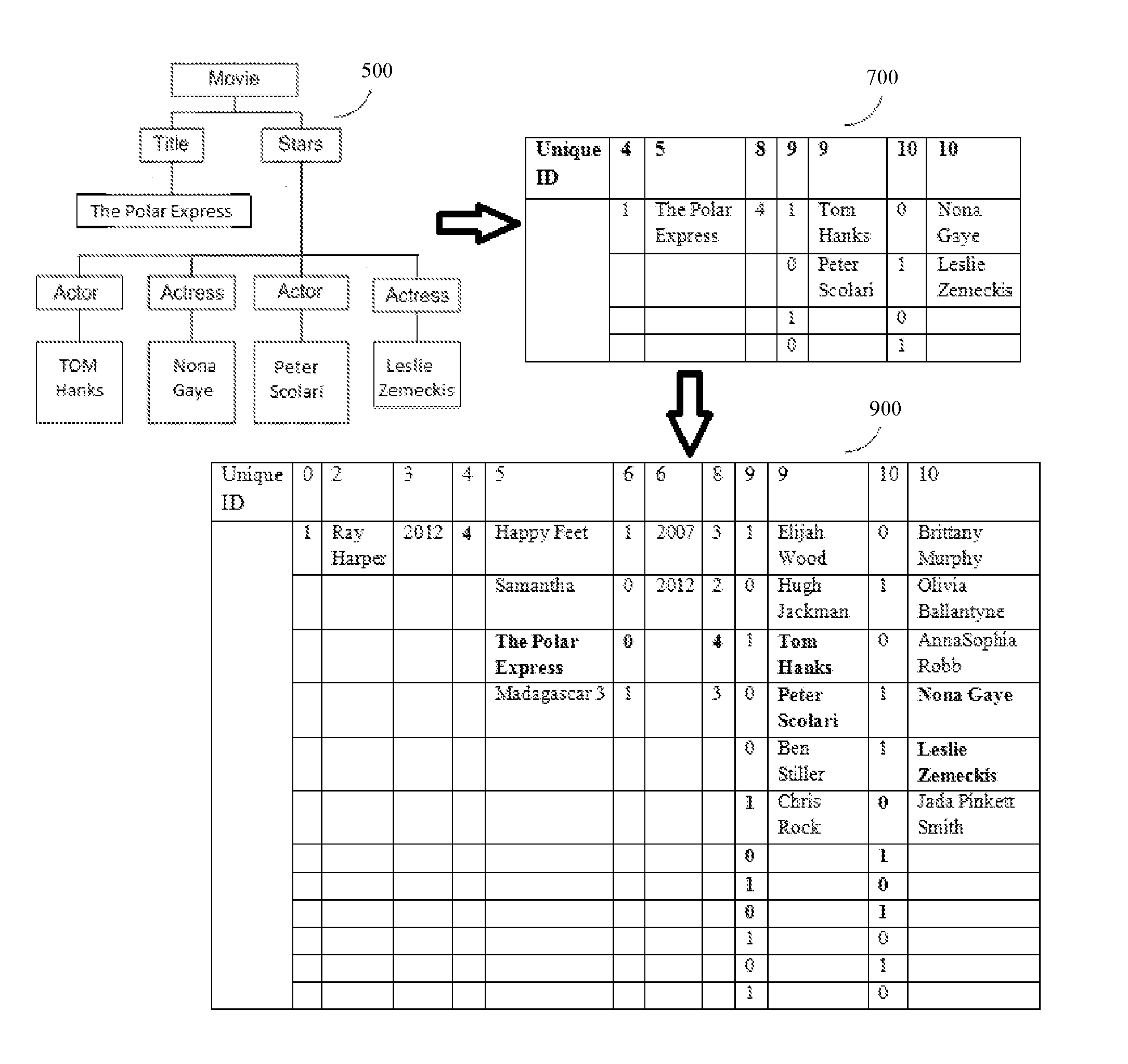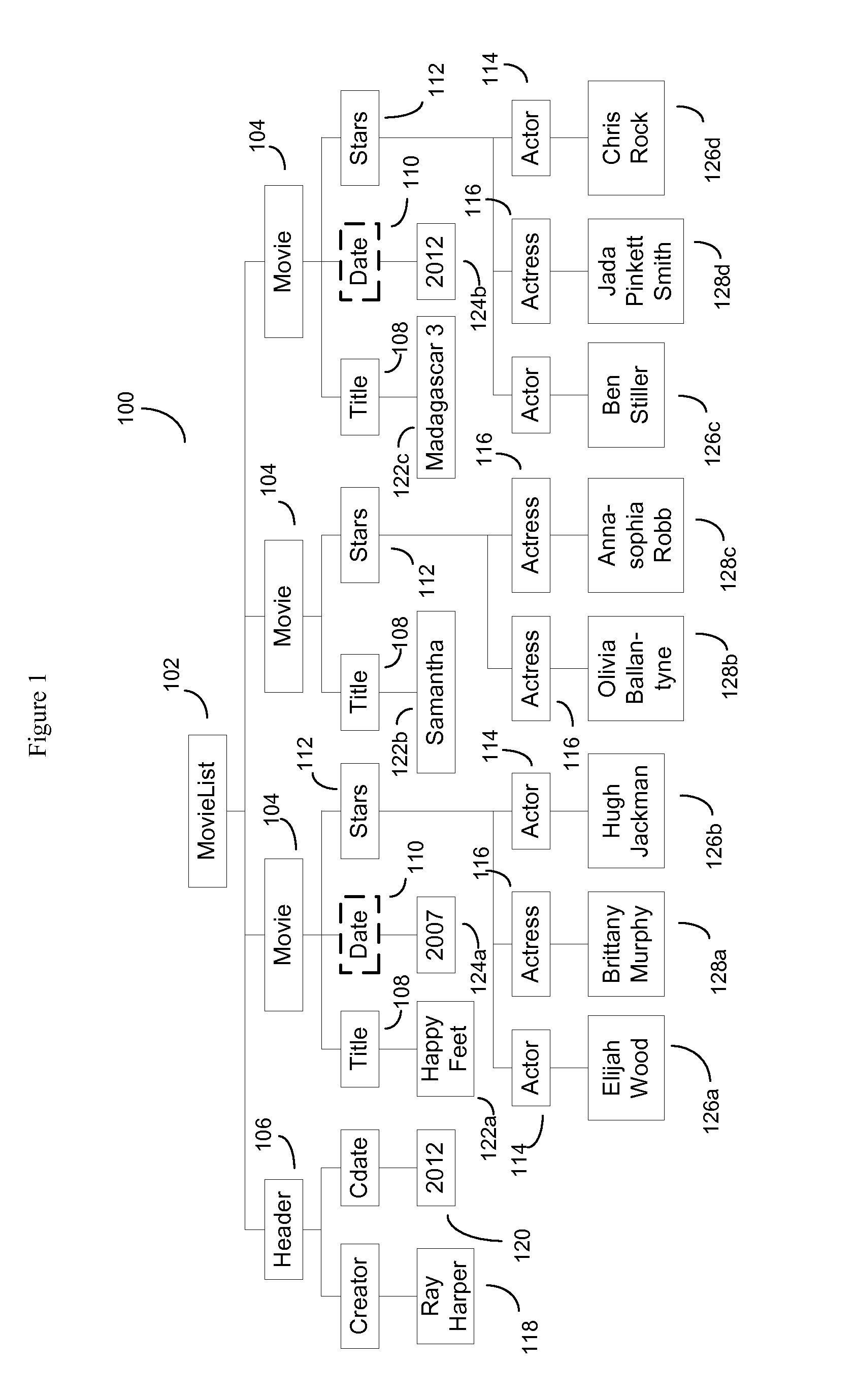Method for representing and storing hierarchical data in a columnar format
- Summary
- Abstract
- Description
- Claims
- Application Information
AI Technical Summary
Benefits of technology
Problems solved by technology
Method used
Image
Examples
examples
[0125]FIG. 1 shows an example of data, here a list of movies, composed of a plurality of data entries or nodes, which are structured or organized in a hierarchical relationship (100). In this example, the hierarchically structured data has a header that shows that the list was originally created by Ray Harper in 2012 (Cdate). The list has three movies, “Happy Feet”, “Samantha” and “Madagascar 3”, all of the movies have a brief list of stars (actors and actresses), and some of the movies list their production dates as well.
[0126]In FIG. 1, the list's root node is shown as (102). In this example, the list has three (3) occurrences of a repeatable record node “Movie” (104) with data fields corresponding to different movie entries, as well as a non-repeatable record node (106) corresponding to the list header.
[0127]Further, each repeatable record node “Movie” has a sequence of nodes: a mandatory field node “Title” (108), an optional field node “Date” (110) and another mandatory record n...
PUM
 Login to View More
Login to View More Abstract
Description
Claims
Application Information
 Login to View More
Login to View More - R&D
- Intellectual Property
- Life Sciences
- Materials
- Tech Scout
- Unparalleled Data Quality
- Higher Quality Content
- 60% Fewer Hallucinations
Browse by: Latest US Patents, China's latest patents, Technical Efficacy Thesaurus, Application Domain, Technology Topic, Popular Technical Reports.
© 2025 PatSnap. All rights reserved.Legal|Privacy policy|Modern Slavery Act Transparency Statement|Sitemap|About US| Contact US: help@patsnap.com



